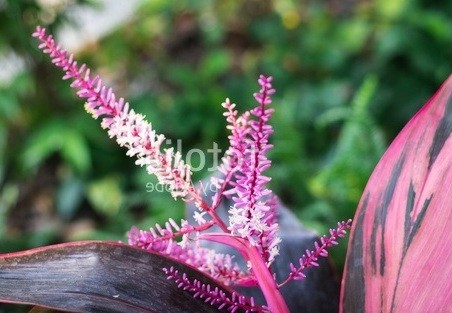Ti plant
(Dracaena angustifolia)

Description
Cordyline fruticosa is an evergreen flowering plant in the family Asparagaceae. The plant is of great cultural importance to the traditional animistic religions of Austronesian and Papuan peoples of the Pacific Islands, New Zealand, Island Southeast Asia, and Papua New Guinea. It is also cultivated for food, traditional medicine, and as an ornamental for its variously colored leaves. It is identified by a wide variety of common names, including ti plant, palm lily, cabbage palm. Ti is a palm-like plant growing up to 3 to 4 m (9.8 to 13.1 ft) tall with an attractive fan-like and spirally arranged cluster of broadly elongated leaves at the tip of the slender trunk. It has numerous color variations, ranging from plants with red leaves to green and variegated forms. It is a woody plant with leaves 30–60 cm (12–24 in) (rarely 75 cm or 30 in) long and 5–10-centimetre (2.0–3.9 in) wide at the top of a woody stem. It produces 40–60-centimetre (16–24 in) long panicles of small scented yellowish to red flowers that mature into red berries. These berries have been described as "dry and fleshy. Its original native distribution is unknown, but it is believed to be native to the region from Bangladesh, to Mainland Southeast Asia, South China, Taiwan, Island Southeast Asia, New Guinea, and Northern Australia. It has the highest morphological diversity in New Guinea and is believed to have been extensively cultivated there. It was carried throughout Oceania by Austronesians, reaching as far as Hawaii, New Zealand (including the Kermadec Islands), and Easter Island at their furthest extent. A particularly important type of ti in eastern Polynesia is a large green-leafed cultivar grown for their enlarged edible rhizomes. Unlike the ti populations in Southeast Asia and Near Oceania, this cultivar is almost entirely sterile in the further islands of eastern Polynesia. It can be propagated only by cuttings from the stalks or the rhizomes. It is speculated that this was the result of deliberate artificial selection, probably because they produce larger and less fibrous rhizomes more suitable for use as food.
Taxonomic tree:







